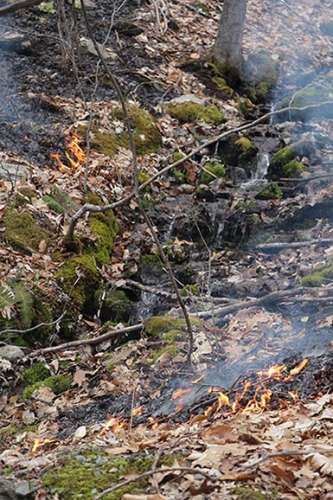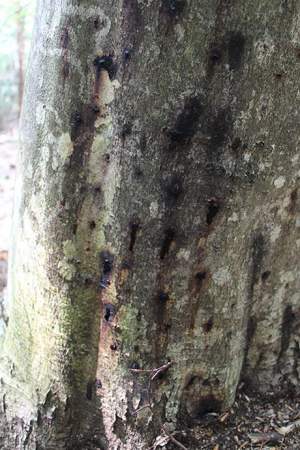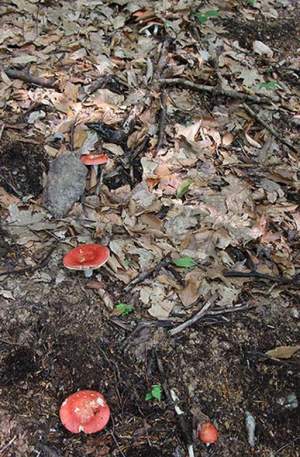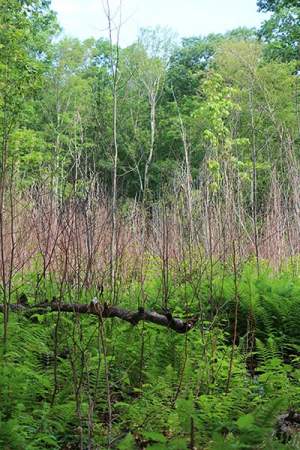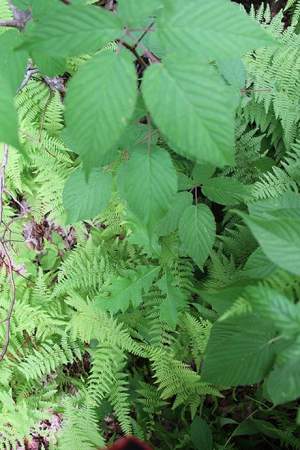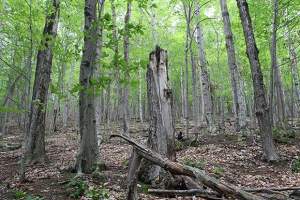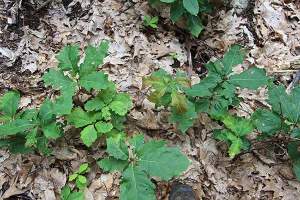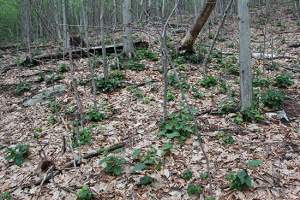When people – myself included – write about forestry they tend to focus on the treatments or harvests as though they’re the story. It’s where the action is. But, of course, while they’re a part of the story, they’re more like the first chapter, not the last chapter. If you were to analogize this to a romantic Hollywood movie, the harvest is like the romance scene 15 minutes into the film – the moment of first physical contact. Imagine how ripped-off you’d feel if Pretty Woman ended after Vivian’s first night in Edward’s hotel room. No polo match, no shopping scene, no La Traviata, no Richard punching Phillip in the face, no moment of surrender where he transforms and comes riding a white limonene to her rescue in the end. Such a movie wouldn’t be considered a story; it would be considered pornography. And yet, like I was saying, that’s how we tend to write about forestry.
Last spring we did a controlled burn on a 12-acre stand of steep, oakey and beechey woods. (If you looked closely at the understory you’d have seen it was even a little American Chestnutey, though nothing without blight.) Six acres was a shelterwood where we’d previously cut everything but nice oak, only to get thick beech stump-sprout regeneration and a bunch of hay-scented fern. We were hoping the fire would be a non-herbicidal means of control. The second block was six acres of uncut forest – a multi-age stand full of diseased beech and decent oak with a smattering of black birch and red maple. We raked the duff away from the crop trees we wanted to protect. We were wondering if maybe the burned duff layer would enable oak regeneration under high shade; if so, we’d then do the shelterwood after the seedlings established. You can read more about it here if you’re interested.
So the ring of fire was lit and it burned, burned, burned. Smoke poured off the mountain. The poor fire department got inundated with calls. It was all very cinematic.
And then, the story that’s going to play out over a century or more began.
I visited the block this past week to check things out and found a mixed bag of results. In the shelterwood part it seemed like the fire killed all the beech under 1-inch in diameter, maybe 75 percent of the stuff that was 1- to 2-inch, 25 percent of the 3- to 4-inch trees. Four inches and bigger didn’t die, but there was significant bole damage and you could tell the trees weren’t well. One thing that surprised me was that even the mature beech shows signs of stress in their crowns – it’ll be interesting to see if they eventually succumb. A not that surprising but disappointing nevertheless observation was that the wounded trees put out big flushes of suckers. Michael Batcher of Buskirk, New York, commented on the blog I wrote immediately following the fire that a fall burn might have been more effective than a spring one. “Basically you need to hit the beech before it has put resources back into the ground,” he said. We were also disappointed to see that it didn’t do anything to hamper the hay-scented fern; in fact, it may have exacerbated the problem. On the plus side, there are pockets of really nice oak regen, which is what we were after. And some parts are full of brambles and low-bush blues that the wildlife is going to really like.
In the uncut section there’s not a lot going on. Just a barren understory. There’s not a lot of light getting in, so not a lot of regeneration of any kind. The one thing that seemed to really respond to the fire in this block was Russula mushrooms, which are everywhere in the understory. In this observation I was somewhat scientific, comparing the burned woods to the control on either side and there’s no doubt that the fire stimulated the fruiting.
So there’s chapter two. At this point the burn was not what we’d hoped for, but we’ll continue to see how things unfold and adjust our management techniques accordingly.


